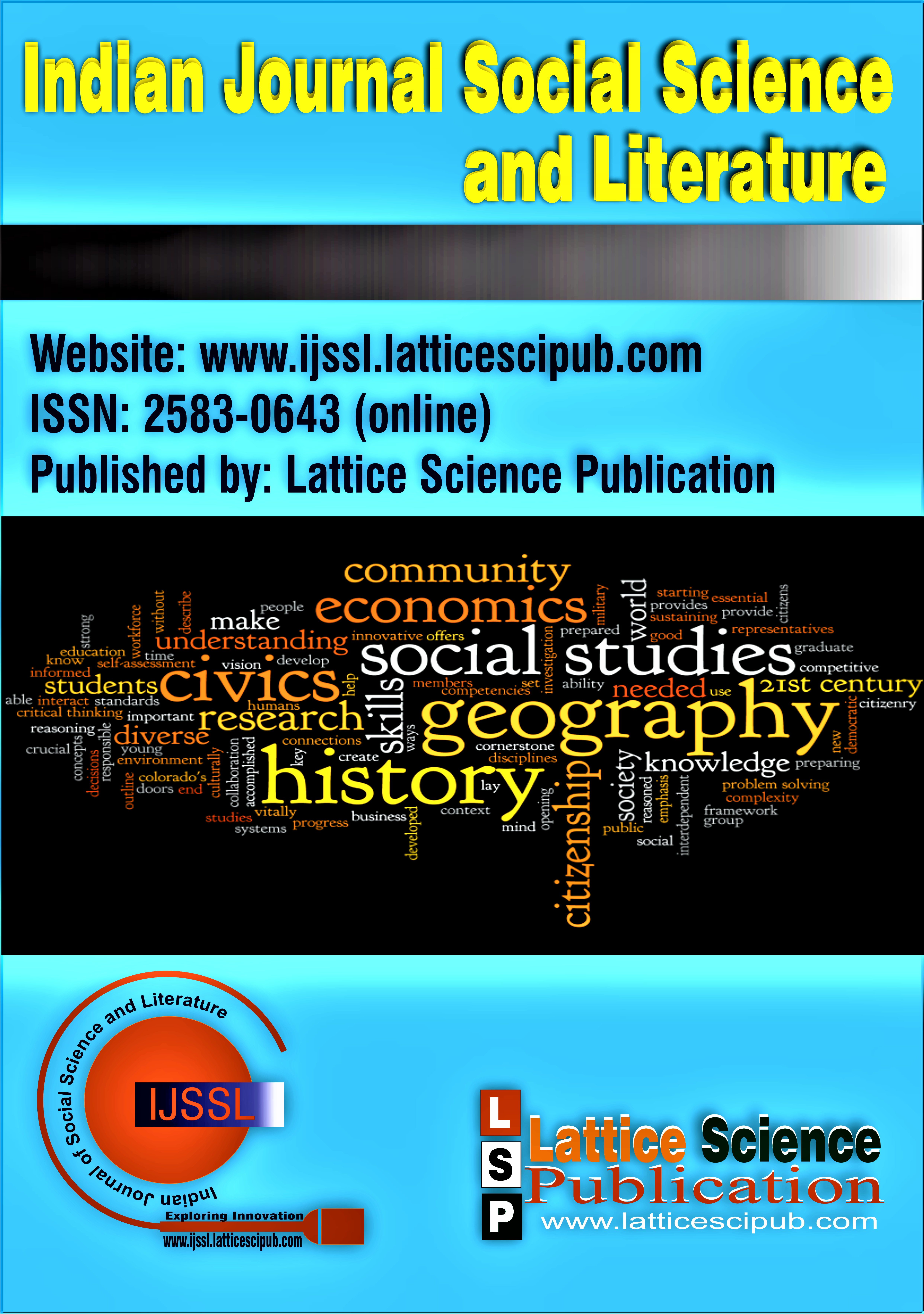Assessing the Effectiveness of the NEP in Higher Education Institutions GER in India
Main Article Content
Abstract
The National Education Policy (NEP) aims to bring about significant changes in the Indian education system. One of the key indicators of the effectiveness of this policy is the Gross Enrolment Ratio (GER) in Higher Education Institutions (HEIs). This document seeks to assess the impact and effectiveness of the NEP on the GER in HEIs.
Downloads
Article Details

This work is licensed under a Creative Commons Attribution-NonCommercial-NoDerivatives 4.0 International License.
How to Cite
References
Benson Ch. (2003), Perspectives on the Economics of education vol-38, (www.googleBookks.com)AmericanEducational research association, America pp: 213-214. (PDF) The Role of Female Education on Economic Development: Cross Sectional Data. June 2023 The Developing Economies
Kumar, K (2005). Quality of education at the beginning of the 21st century: lessons from India", Education for All Global Monitoring Report 2005, 2004. [Accessed 2 October 2020 https://unesdoc.unesco.org/ark:/48223/pf0000146663].
Aithal, P. S., & Aithal, Shubhrajyotsna (2020). Analysis of the Indian National Education Policy2020 towards Achieving its Objectives. International Journal of Management, Technology, and Social Sciences (IJMTS), 5(2), 19-41. DOI: http://doi.org/10.5281/zenodo.3988767
Venkateshwarlu, B. "A critical study of NEP2020: Issues, approaches,
challenges, opportunities & criticism.[4]" International Journal of
Multidisciplinary Educational Research 10.5 (2021): 191-196. https://doi.org/10.47992/IJMTS.2581.6012.0102
Jain, Manya. A study of India's failing Education System. XXT Annual
International Conference Proceedings; January 2020
Aithal, P. S., Suresh Kumar, P. M., and Pavithra Kumari, (2015). Methods and Approaches for Employability Skill Generation in Higher Educational Institutions. International Journal of Management, IT and Engineering (IJMIE), 5(7), 390-410. DOI: http://doi.org/10.5281/zenodo.267044.
(PDF) Analysis of the Indian National Education Policy 2020 towards Achieving its Objectives.
Leelavanthi*, C., Kora, P., Swaraja, K., Meenakshi, K., & Samson, M. (2019). IoT Based Smart Surveillance System for Healthcare Monitoring using Raspberry PI. In International Journal of Innovative Technology and Exploring Engineering (Vol. 8, Issue 12, pp. 627–629). https://doi.org/10.35940/ijitee.j9974.1081219
Singh, R. K. (2022). Role of Vocational Education and Skill Training to Stimulate Human Development. In Indian Journal of Social Science and Literature (Vol. 2, Issue 1, pp. 31–36). https://doi.org/10.54105/ijssl.a1030.092122
Olojuolawe, S. R., Fadila, N. B. M. A., Latif, A. A., Sani, H. A., & Wase, H. G. (2019). Structural Classification of Employability Skills Hierarchy using Rasch Analysis Model. In International Journal of Recent Technology and Engineering (IJRTE) (Vol. 8, Issue 3, pp. 3581–3591). https://doi.org/10.35940/ijrte.c5302.098319
Azmi, A. N., Kamin, Y., Nasir, A. N. M., & Noordin, M. K. (2019). The Engineering Undergraduates Industrial Training Programme in Malaysia: Issues and Resolutions. In International Journal of Engineering and Advanced Technology (Vol. 8, Issue 5c, pp. 405–419). https://doi.org/10.35940/ijeat.e1058.0585c19
Maharani, A., Gunawan, H., & Wijaya, J. D. T. (2020). Millennial Expectations about the Desire to Stay in the Workplace and Factors that Influence it. In International Journal of Management and Humanities (Vol. 4, Issue 7, pp. 37–39). https://doi.org/10.35940/ijmh.g0665.034720





